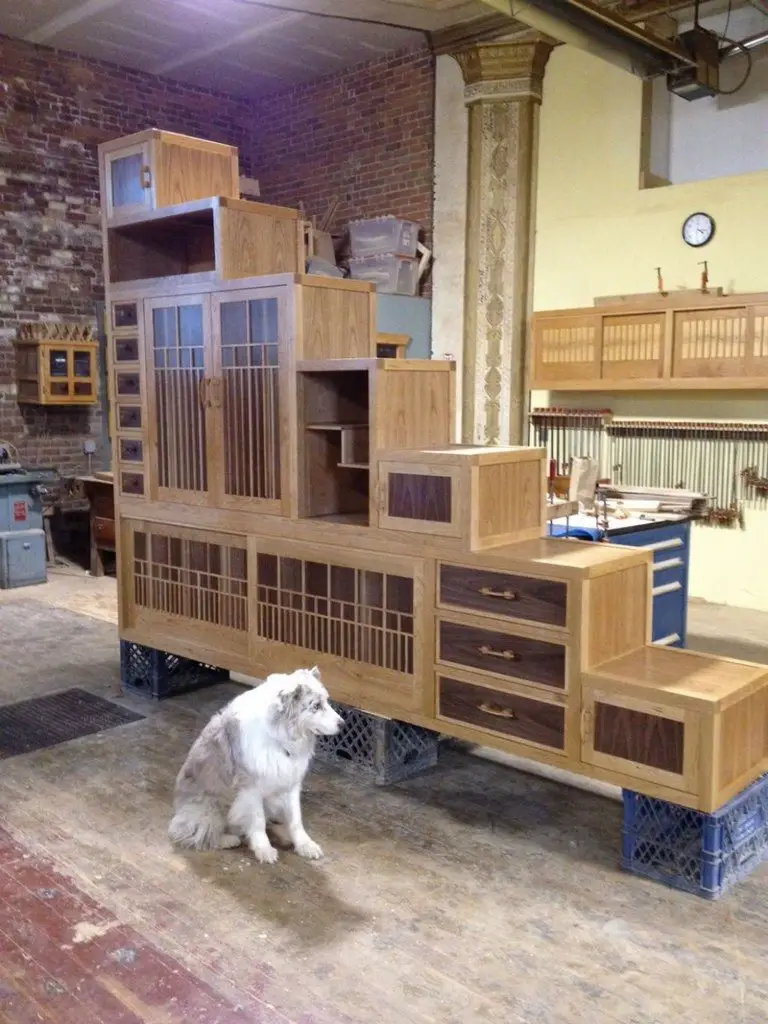THE DOORS – With a sharp chisel and a random orbit sander, I cleaned up the extra glue and smoothed the joints and was sure not to round over any of the nice square pieces.
On a piece of paper, I laid out the different paneled doors. Then, taking care with my measurements off of the case, I created a cut list for the necessary parts.
I milled necessary stock to a strong 3/4” and also laid up the necessary door panels as described earlier. Once I milled the stock, I checked the original dimensions carefully and sized all stock on table saw.
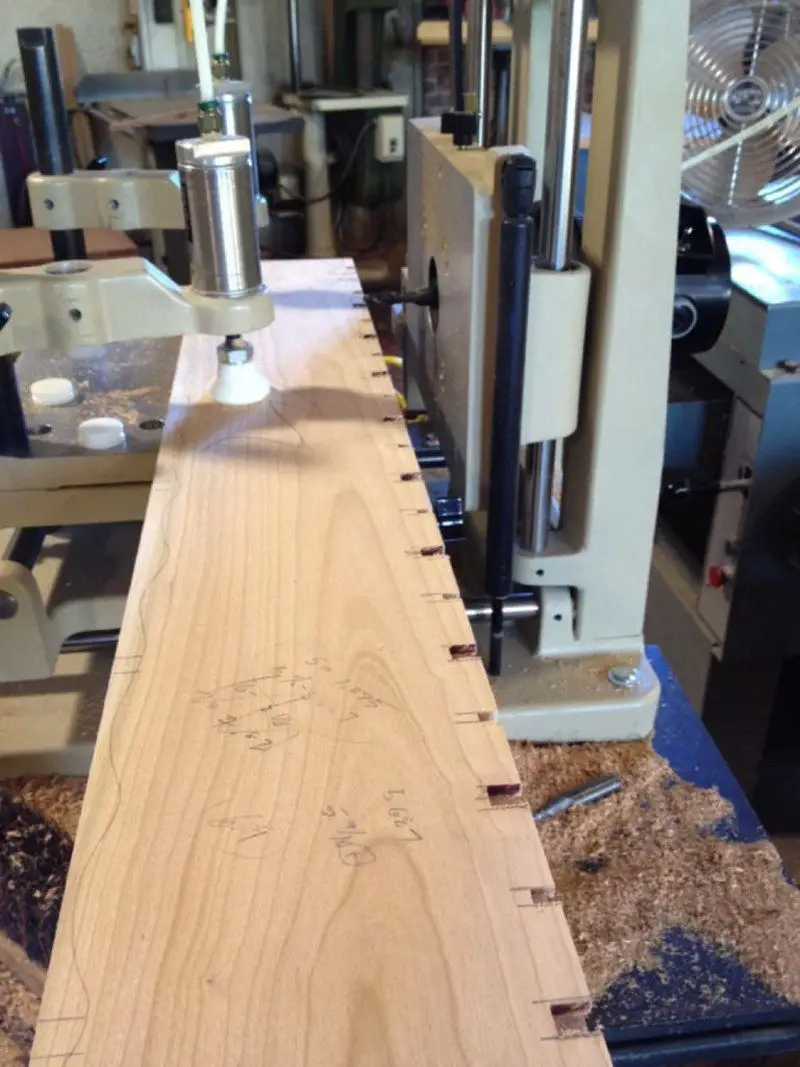
Then, I cut mortises in all the necessary joints – this should only take one setup on the mortiser.
I put panels in the veneer press one side at a time. After pressing, I removed all glue from the press panels and sand panels. As with the frame, I cut dado’s to allow for panels. Once again, you should be very careful with the stop dado’s.
I glued up the doors, taking care that they were flat and square.
For the sliding doors, I repeated all the same steps, but made the stock 5/8” thick.
Using a calculator, I devised a symmetrical layout for the decorative latticework.
With decorative lattice strips prepared, I created ‘layout’ blocks to help evenly space the strips. I marked all joints with a pencil and cut on a mortising machine.
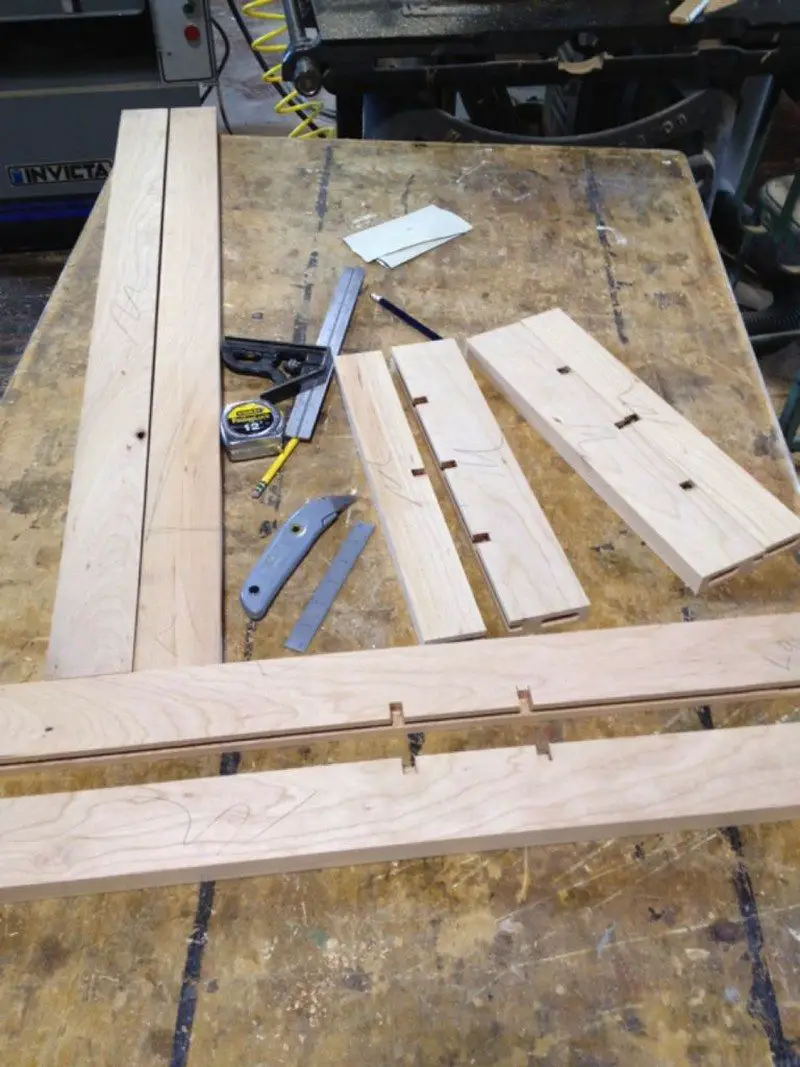
I glued up the sliding doors – same as the regular doors. Then, I sanded all doors, paying close attention to the joints; making them nice and even.
On the regular swinging doors, I bored for 32mm cup hinges. At the same time, I took a sacrificial piece of wood – the same vertical size as the door – and bore that as well.
I mounted cup hinges in the sacrificial member in order to align the cabinet hardware of the hinge.
Now, I placed the sacrificial stick in cabinet with a ¼” setback, taking care to keep the stick perfectly vertical.
I attached the door hardware into the cups and placed the doors in the stepped cabinet. Are you still with me?
Then I made adjustments for even spacing for optimal 1/16” reveal all the way around and smooth swinging.
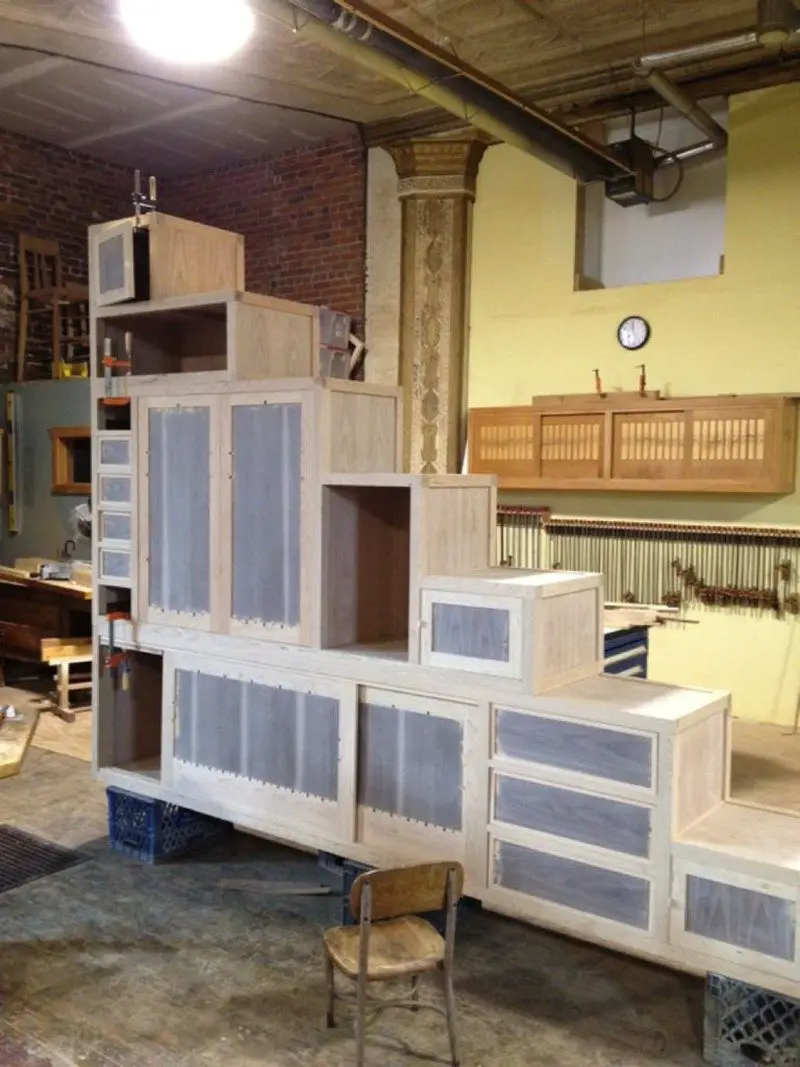
On to the sliders; I installed the decorative latticework of the sliders. My first step was to size all the sticks, disregarding the need for joinery.
Then, in two stages, I marked for the joinery. First I installed all the vertical sticks at once and with a long straight edge and marked all the necessary dado’s.
I remove the horizontal sticks and repeated the steps above for the vertical sticks.
With a miter gauge on the table saw and my blade just coming out of the table, I cut all necessary dado’s, taking time to fit each one.

I glued it all together with the assistance of a little hammer.

Then I moved on to drawers. I decided what size I wanted my drawers to be and sized my stock. I like ½” wall drawer boxes.
I cut dovetails (use whatever method you are comfortable with) and glued the drawers together. Then, I decided what kind of drawer fronts and handles I wanted. I fabricated, sanded and attached to the drawers after they’d been sanded.
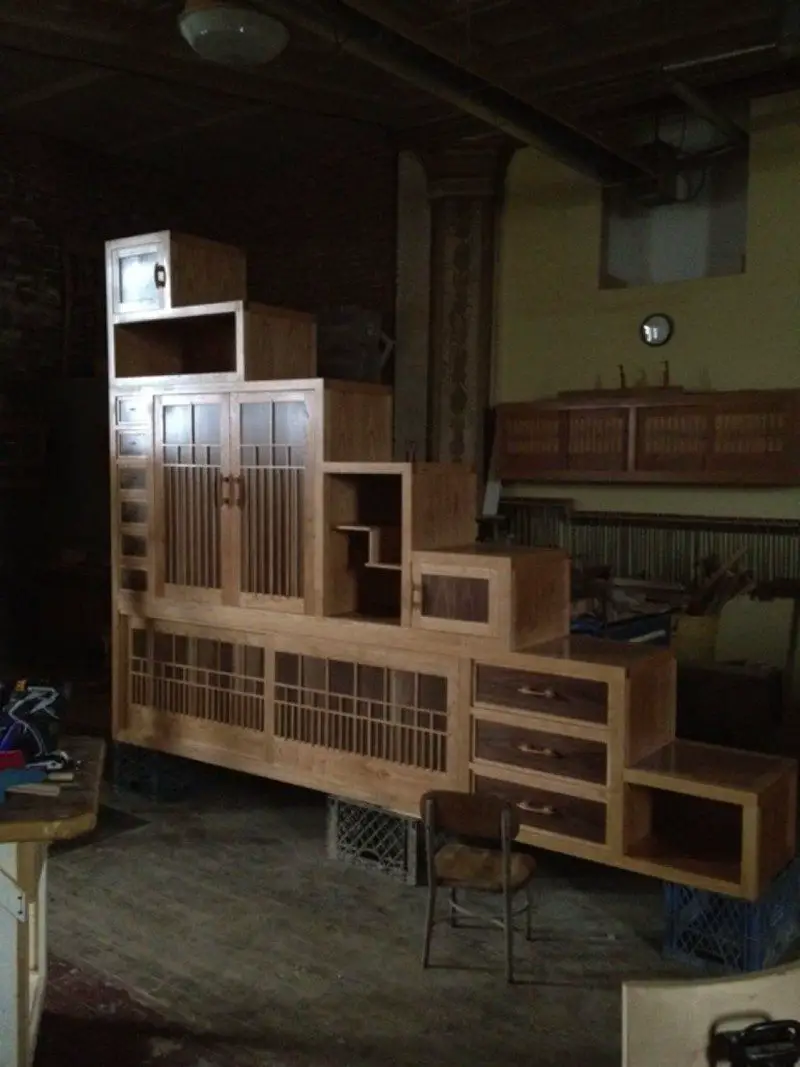
After, I final sanded all my parts – case and all. For this, I suggest you wear your dust mask and turn your radio really loud, this step is going to take a while.
Time for finish work. I chose to spray all my parts. You may choose the same or to oil. As with all steps, take your time here.

Any piece of furniture is only as good as the finish that you put on it.
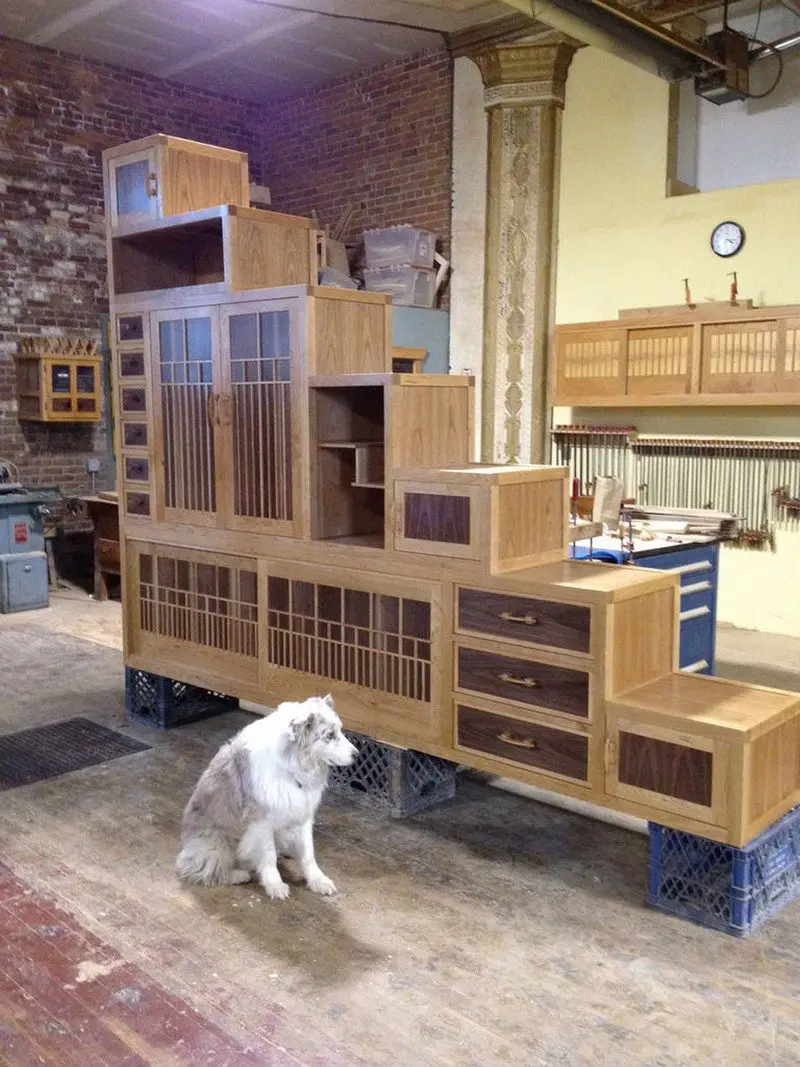
This project may look like a lot of work with all its small details, but we’re confident you can pull it off. Ready for this DIY project? :)

